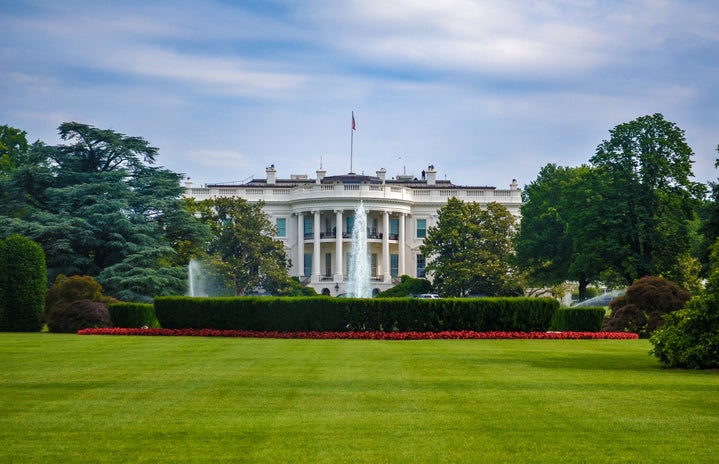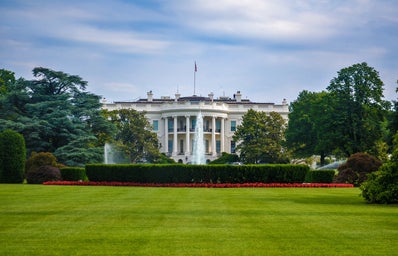If you’re a fan of dystopian fiction, you might be experiencing deja vú by witnessing the events that have unfolded over the past two weeks since Donald Trump was sworn in as the 45th President of the United States. From Jan. 20 up until the present moment (Feb. 3), Donald Trump has: signed an executive order begin the process of dismantling the Affordable Care Act, to “ease the burden” of the policy, suspended an insurance rate cut that would have reduced annual insurance for new homeowners by 25 points, ordered a freeze on federal regulations, signed an memorandum preventing U.S. funds from going to health charities around the world that counsel on abortions, withdrew the U.S. from the Trans-Pacific Partnership deal with Asia, and ordered a temporary freeze on the hiring of federal workers.
He has also signed orders to complete the Dakota Access and restart construction on the Keystone XL pipeline, directed federal agencies to prepare for immediate construction of a wall across the U.S./Mexico border, signed an executive order to strip federal grant money from “sanctuary cities” which protected undocumented immigrants, signed an order to strengthen the resources and equipment of the U.S. military, signed an executive order to call for more intensive security checks on foreigners seeking U.S. travel visas, reorganized the National Security Council to include his chief strategist Steve Bannon and the CIA while removing the director of national intelligence and the joint chiefs of staff, signed an executive order stating that two federal regulations on both small and large businesses must be removed for every one added, nominated conservative Judge Neil Gorsuch to the Supreme Court, and signed two executive orders to scale back Wall Street regulation. The Senate also voted on Thursday, Feb. 2, to repeal the Stream Protection Rule, which went into effect on Obama’s last day in office. This ruling, simply, prevents coal companies from dumping waste into streams. Finally, Trump signed an executive order bearing the title “Protecting the Nation From Foreign Terrorist Entry Into the United States”.
The graphic novel, “V for Vendetta” by Alan Moore (which was also made into a movie in 2005 and is currently available on Netflix), while generally focused on themes of anarchism versus fascism, also imparts a message of personal and moral responsibility. The main character, V, wears a Guy Fawkes mask to conceal his identity and is an anarchist at heart. After being fatally wounded, he states that beneath his mask lies more than a man, but an idea, which is bulletproof and cannot die.
Moore admitted that although “V for Vendetta” provides quite extreme examples of overthrowing an exaggerated regime, the underlying idea was have his readers question what they would do if such a situation arose. In a nation ruled by fear and force, controlling of media, worshipping a strong leader, and highly xenophobic, what can one person do? “V for Vendetta” teaches us that one person inspiring many, if only a few initially, can create an immortal movement. If we speak and act for what we believe in, we can never be silenced.
By Jan. 27, a week after Trump was sworn in, “1984” by George Orwell was the best-selling book on Amazon.com. On BBC’s report of the recent increase in popularity of certain dystopian novels, they summarize “1984” as: “A man crushed by a totalitarian, surveillance state — presided over by the all-seeing and possibly non-existent Big Brother — attempts to rebel.” This isn’t the first spike in sales the book has seen in recent years, the last one being after Edward Snowden leaked classified information from the NSA in 2013.
One eery factor that “1984” parallels with today’s administration is Kellyanne Conway’s “alternative facts” interview, and her false statement justifying Trump’s immigration ban with the “Bowling Green massacre” (something which never took place). Orwell’s story is the dismal but somewhat inspiring tale of a man who after many years of suspicion, realizes there is something wrong with the way society is being run. While not necessarily providing any character driven lessons, “1984” reminds us to look out for warning signs and be able to recognize when things have gone horribly awry.
“Fahrenheit 451” by Ray Bradbury is, according to the BBC, moving around the 15th spot on Amazon’s best-selling list. As in Orwell’s “1984,” Bradbury’s main character, Guy Montag, works as a cog in the machinery of the government, a “fireman” whose job it is to burn illegally-owned books in the homes of their owners; he slowly learns to question his position and morals within society. Although the ending is rather dismal, with Montag’s city being annihilated by nuclear bombs, only a few survivors and drifters escaping with him, they band together to rebuild the new world.
Focused mainly on themes of censorship, ignorance and propaganda, Bradbury’s work hearkens to Trump and his followers’ loathing and hostility towards “the media”. Again, like “1984,” “Fahrenheit 451” encourages readers to examine their surroundings, providng the insight to what the future may hold if passivity and apathy take over.


